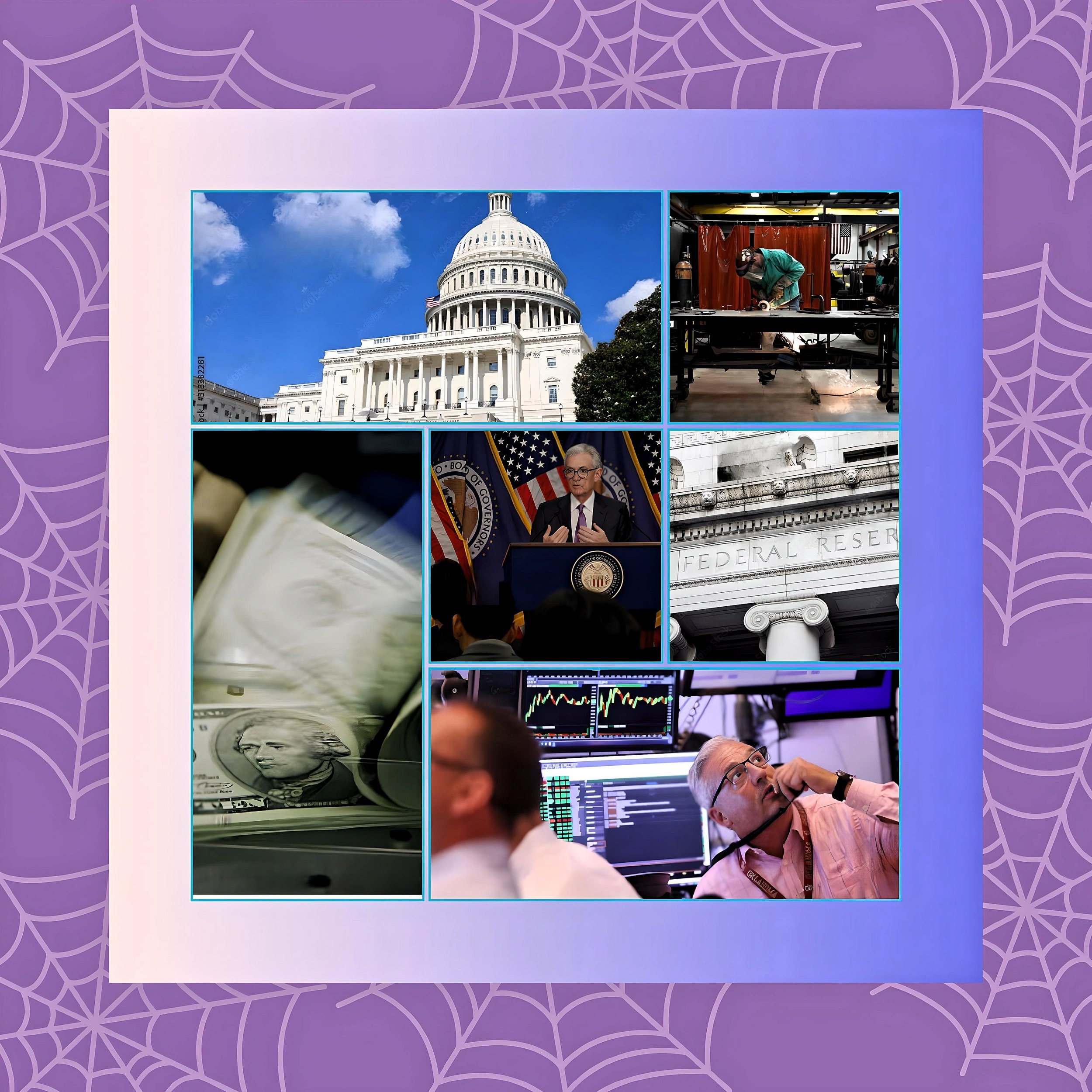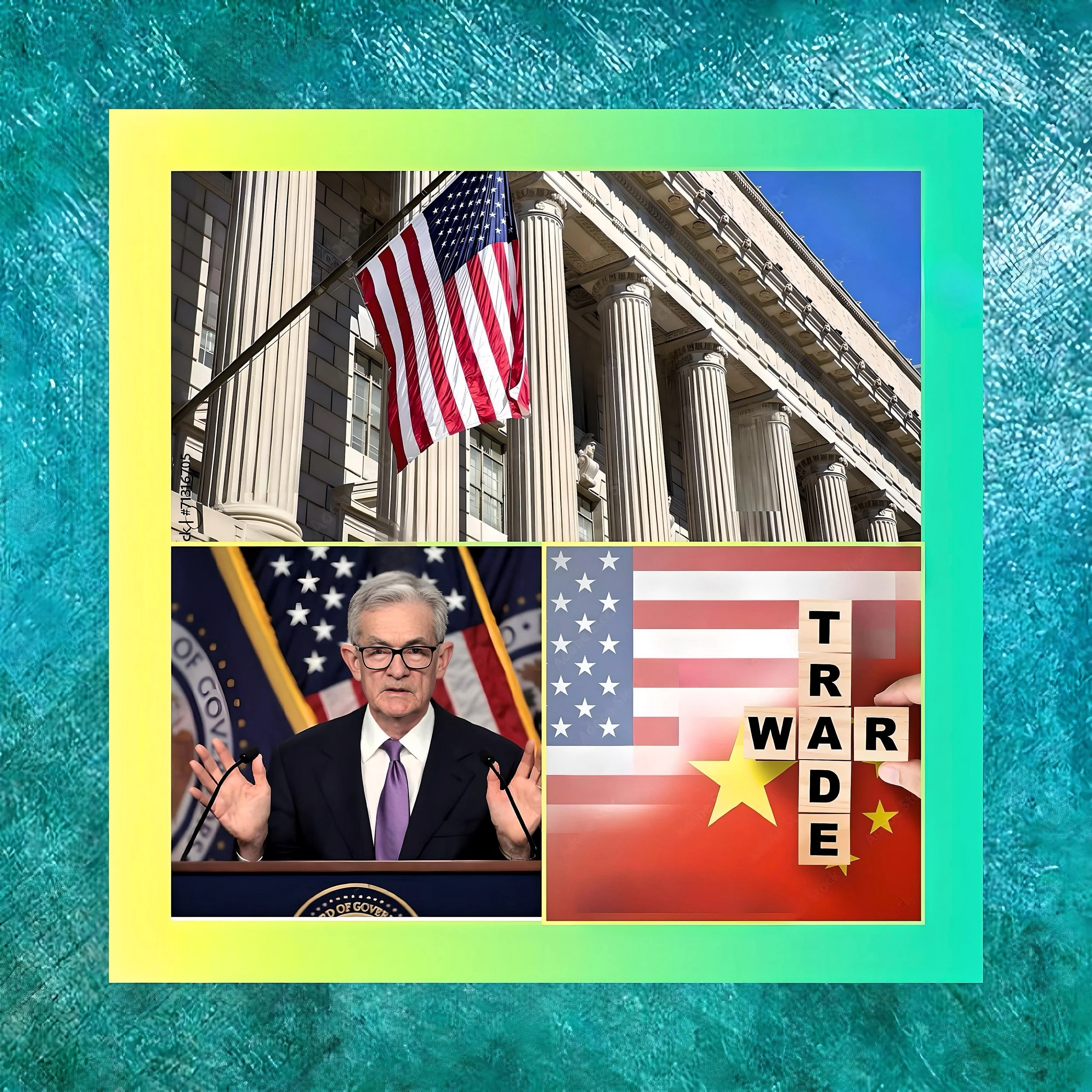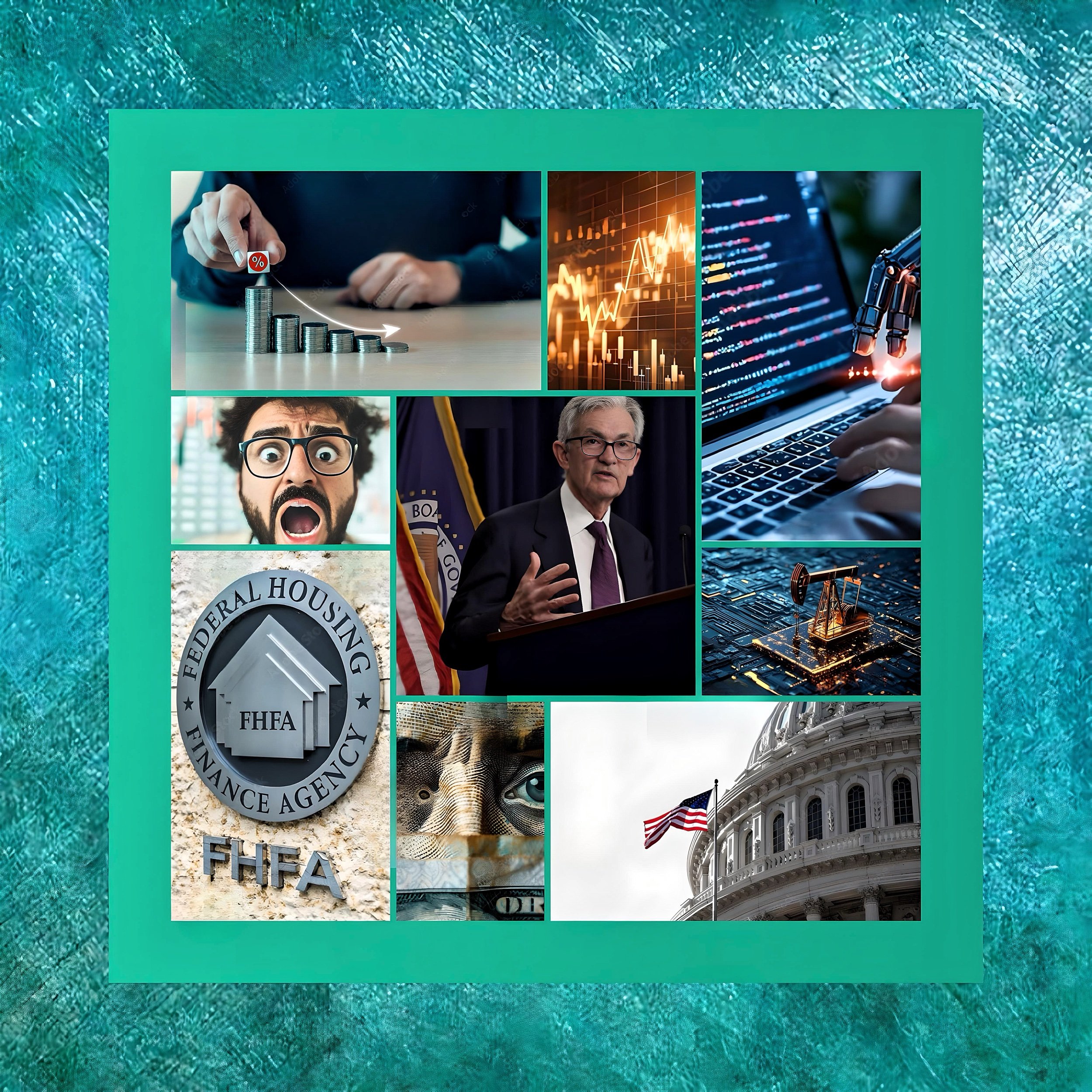Powell Stresses Patience On Rate Cuts: A Comprehensive Analysis of Federal Reserve Policy in Uncertain Times
Introduction
Federal Reserve Chair Jerome Powell has solidified the central bank’s cautious approach to monetary policy adjustments, emphasizing patience in considering interest rate cuts amid a complex economic landscape.
With the federal funds rate holding steady at 4.25%-4.5% since late 2024, the Fed’s stance reflects confidence in current economic resilience balanced against persistent inflation and policy uncertainties stemming from President Trump’s administration.
February 2025 labor data showing 151,000 jobs added and unemployment at 4.1% underscores labor market stability, while core inflation at 2.6% remains above the 2% target.
Powell’s repeated assertions that “the economy is fine” and doesn’t require immediate intervention highlight the Fed’s strategic prioritization of data clarity over-reactive measures, particularly given evolving trade policies, immigration reforms, and fiscal shifts.
The article examines the multidimensional forces shaping monetary policy, analyzing labor dynamics, inflationary pressures, political impacts, and market responses within the Fed’s dual mandate framework.
Economic Fundamentals Underpinning Federal Reserve Patience
Labor Market Resilience as Policy Anchor
The February 2025 jobs report reaffirmed labor market durability, with employers adding 151,000 positions—consistent with the six-month average of 191,000 monthly gains.
Unemployment’s incremental rise to 4.1% from 4% reflects natural labor force expansion rather than deterioration, aligning with Powell’s “broadly balanced” condition assessment. Wage growth moderation to 4.3% annualized, down from pandemic-era peaks, reduces fears of wage-price spirals while maintaining real income gains above inflation.
Sectoral analysis reveals healthcare and professional services driving hiring, offsetting federal workforce reductions from the Department of Government Efficiency’s streamlining initiatives.
Powell’s dismissal of softening consumer sentiment as a reliable spending predictor highlights structural labor strength.
Despite the Conference Board’s Consumer Confidence Index plunging seven points to 98.3 in February—the steepest drop since 2021—retail sales grew 0.8% month over month, demonstrating a disconnect between sentiment surveys and economic behavior.
This resilience allows the Fed to prioritize inflation containment without imminent recession fears.
Inflation Dynamics: Progress and Stubbornness
Core PCE inflation’s descent to 2.6% in December 2024 marked tangible progress from 2023’s 5.4% peak yet remains above target. Goods inflation normalization through supply chain repairs contrasts with persistent services sector pressures, particularly shelter (5.1% YoY) and transportation (4.7%).
Powell’s emphasis on “uneven” disinflation acknowledges bifurcated trends: commodity prices fell 1.2% in Q4 2024, while service sector stickiness reflects lagged shelter CPI adjustments and labor-intensive cost structures.
Energy price volatility introduces additional complexity. Brent crude’s 12% Q1 2025 surge to $92/barrel, driven by Middle East tensions and Trump’s oil drilling restrictions, risks reversing transportation cost improvements. Similarly, agricultural commodity spikes from Ukrainian export disruptions threaten food inflation stability.
The Fed’s “wait-and-see” posture balances these crosscurrents against moderating core trends, resisting premature declaration of victory.
GDP Growth and Consumption Under Policy Uncertainty
Q4 2024 annual GDP growth of 2.3% reflects economic momentum despite tightening credit conditions.
Consumer spending expanded 2.9%, supported by accumulated pandemic savings and wage gains, while business investment slowed to 1.2% amid regulatory uncertainty.
The Fed’s Financial Conditions Index shows 85 basis points of tightening since December 2024, as 10-year Treasury yields rebounded to 4.55% from January’s 4.38% low.
Powell’s testimony notes “healthy but not excessive” credit growth, with commercial lending up 5.8% YoY versus 2023’s 9.4%. Housing market stabilization—evidenced by 0.6% mortgage application growth in February—suggests rate sensitivity diminishing as buyers adjust to elevated borrowing costs.
These factors collectively depict an economy absorbing higher rates without acute stress, justifying policy restraint.
Monetary Policy Architecture in Flux
Rate Cut Thresholds and Historical Parallels
The Fed’s current 4.25%-4.5% target range follows 2024’s 100 basis points of cuts, contrasting starkly with 2023’s 525 basis point hiking cycle. Historical analysis reveals this as the lengthiest pause since 2006-2007 when rates held at 5.25% for 15 months before the Global Financial Crisis cuts. Powell’s invocation of 1990s parallels—where the Fed maintained rates amid productivity-driven growth—signals comfort with prolonged restrictiveness if inflation trends permit.
Market pricing reflects diminished cut expectations, with March odds at 3% versus December’s 65%. Futures imply merely 25 basis points of 2025 easing, down from 75 priced post-2024 elections. This repricing aligns with Fed rhetoric emphasizing patience, though Treasury sell-offs (10-year yields +17bps since January) indicate investor frustration with delayed normalization.
Transmission Mechanism Efficacy Assessment
Monetary policy operates through three channels: interest rates (direct borrowing costs), asset prices (wealth effects), and exchange rates (trade competitiveness). Current conditions reveal asymmetric transmission:
Interest Rate Channel: The prime rate at 7.5% has slowed credit card balances (+4.1% YoY vs. 2023’s +15%), but corporate bond issuance remains robust ($180B Q1 2025).
Asset Price Channel: S&P 500’s 8% YTD gain offsets housing stagnation, sustaining household net worth at $156 trillion.
Exchange Rate Channel: Dollar Index (DXY) stability near 104 minimizes import inflation but pressures exporters.
Powell’s focus on “balanced” transmission acknowledges these mixed effects, suggesting that policy remains restrictive enough to cool inflation without crushing growth—a delicate equilibrium that requires maintenance.
Political Economy of Trump Policy Impacts
Trade Policy Whiplash and Inflation Risks
Trump’s tariff reversals—reimposing 25% steel/aluminum duties post-brief suspension—exemplify policy volatility complicating Fed decision-making. Retroactive tariffs on $500B Chinese goods (up from 10% to 25%) and a 10% universal levy threaten to:
Boost Inflation: JPMorgan estimates a 0.7% CPI increase from new tariffs.
Disrupt Supply Chains: Steel imports will raise the cost of auto parts by $45B.
Provoke Retaliation: EU’s proposed $39B counter-tariffs target agricultural exports.
Powell’s “separating signal from the noise” mantra addresses these uncertainties as Fed models struggle to incorporate ad-hoc measures. Historical precedents—like 2018’s 0.3% inflation spike from $200B tariffs—suggest moderated impacts given domestic production reshoring, but risks remain asymmetrical.
Immigration and Labor Market Interactions
Trump’s immigration crackdown—deportations up 220% since inauguration—exerts dual pressures:
Labor Supply Reduction: 1.2 million undocumented workers were removed from the workforce, exacerbating shortages in construction (—325k jobs) and hospitality (—278k).
Wage Inflation: Median hourly wages rose 0.8% MoM in February, the fastest since 2022.
While Powell notes “no significant wage-price spiral,” Atlanta Fed Wage Growth Tracker’s 5.1% reading for job switchers signals persistent heat. The Fed must gauge whether immigration policies structurally alter labor equilibrium, necessitating higher natural unemployment rates.
Fiscal and Regulatory Uncertainty
Proposed tax cuts (corporate rate reduction to 18%) and $2T spending cuts create conflicting impulses. CBO projections suggest:
Short-Term Stimulus: $450B consumer tax relief boosts 2025 GDP by 0.4%.
Long-Term Drag: Discretionary spending caps reduce 2026-2027 growth by 0.7% annually.
Simultaneously, deregulation—evidenced by 22 major rules repealed under the Congressional Review Act—fuels business investment but raises risks to financial stability. Powell’s equipoise reflects limited visibility into these cross-cutting effects.
Financial Market Reactions and Forward Guidance
Treasury Market Turbulence
10-year yields’ climb to 4.55% (+40bps post-election) signals bond vigilantes pricing in fiscal expansion and inflation risks. Auction demand remains robust despite volatility, with March’s $58B 3-year sale clearing at 4.32% (+14bps vs January). Yield curve normalization continues, with 2s10s spread at -25bps (from -110bps in 2023), reducing recession signals.
Equity Markets Defying Rate Fears
S&P 500’s 0.32% gain post-Powell remarks reflect investor relief over delayed cuts’ growth implications. Sectoral dispersion highlights adaptation:
Winners: Industrials (+5.2% MTD) on infrastructure spending hopes.
Losers: Utilities (-3.1%) as higher yields pressure dividend valuations.
Option skews indicate leveraged funds hedging against summer volatility, anticipating June policy clarity.
Currency and Commodity Crosscurrents
DXY stability masks emerging market strain, with Argentine peso (-14%) and Turkish lira (-9%) plunging on dollar debt concerns. Brent crude’s $92/barrel reflects geopolitical premium, complicating inflation outlooks despite U.S. output hitting 13.3M bpd. Gold’s surge to $2,150/oz signals haven demand amid policy unpredictability.
Risk Landscape and Forward Projections
Inflation Acceleration Scenarios
Probability-weighted scenarios suggest
Base Case (60%): Core PCE declines to 2.4% by Q4 2025 as goods disinflation offsets services.
Upside Risk (25%): Tariffs and energy spikes propel core to 3.1%, forcing Fed hikes.
Downside Risk (15%): Recession drives core to 2.0% by Q3, enabling cuts.
Powell’s “asymmetric reaction function” prioritizes containing upside risks, even at growth costs.
Labor Market Tipping Points
Sahm Rule indicators (3-month unemployment avg >0.5ppt from low) remain inactive at 0.3ppt. However, indicators like temporary help services (-0.8% MoM) and average hours worked (34.1 vs 34.6) signal softening. Fed models estimate 150k-200k monthly payrolls as equilibrium; sustained prints below 100k could trigger a dovish pivot.
Global Spillovers and Coordination Challenges
The ECB and BOJ's dovishness (cutting rates to 3.25% and -0.1%, respectively) contrasts the Fed's stance, risking a dollar overshoot. G20 communiqués highlight protectionism concerns, but Powell’s Jackson Hole framework prioritizes domestic mandates over currency warfare.
Conclusion: Navigating the Fog of Policy Uncertainty
The Federal Reserve’s patient posture embodies cautious pragmatism in an era of political and economic flux. By resisting reactionary cuts to buoyant growth indicators, Powell prioritizes inflation credibility—a legacy-defining choice given 1970s parallels. However, risks abound:
Over-Tightening: Delayed cuts could unnecessarily depress investment if disinflation accelerates.
Political Capture: Perceived deference to Trump’s tariff agenda may erode institutional independence.
Market Complacency: Equity valuations assume Goldilocks outcomes are vulnerable to exogenous shocks.
Forward guidance must balance transparency with flexibility, emphasizing data dependence while preparing markets for multiple contingencies. As Powell astutely noted, “The costs of being cautious are very, very low”—a mantra befitting the most complex policy environment since the Volcker era.
With the FOMC’s March meeting unlikely to yield changes, investors should brace for extended volatility, recognizing that clarity remains months, not weeks, away.





